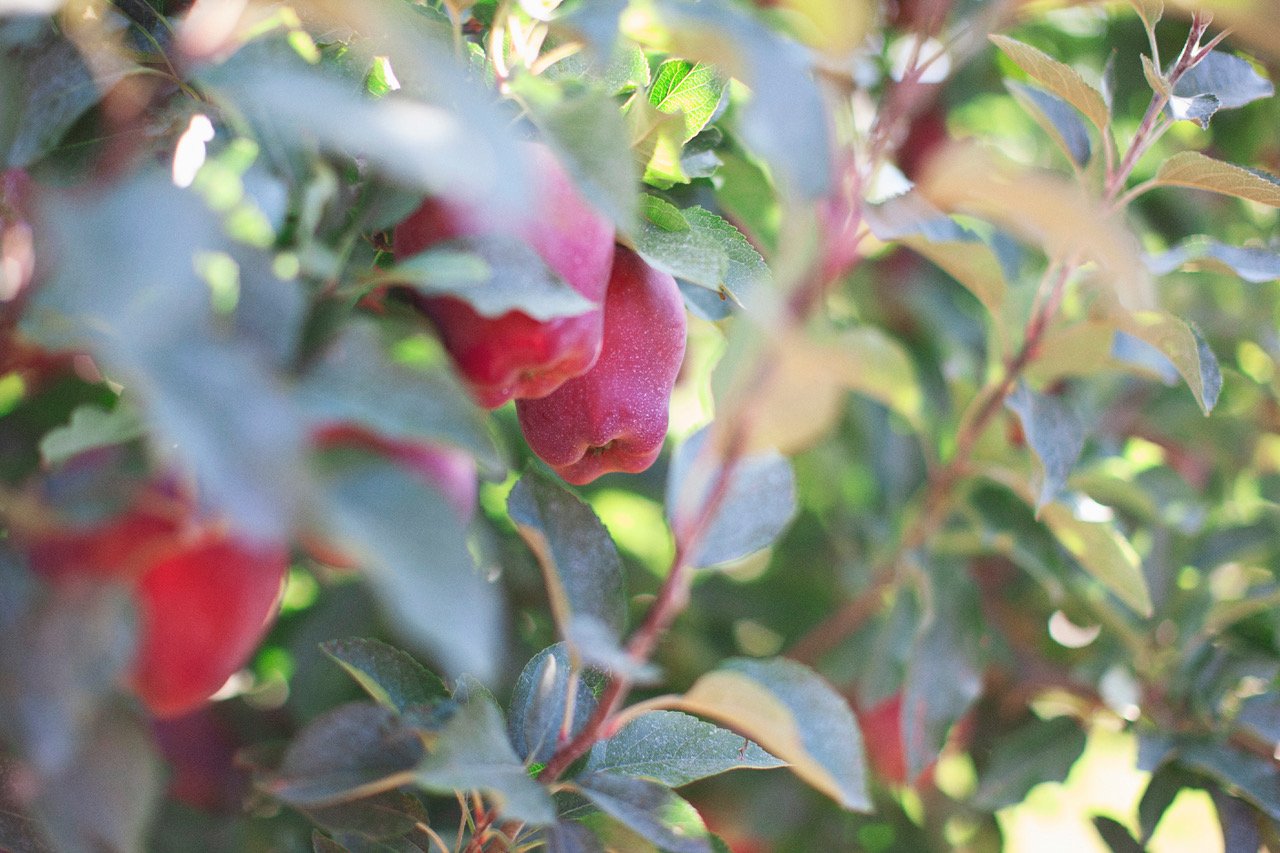Our Apples.
-

Gala
Quickly becoming the new top apple variety in the United States, Gala is mildly sweet and accessible year-round. Gala apples were discovered in New Zealand circa 1934 by Orchardist J.H. Kidd. A cross between Golden Delicious and Kidd’s orange red apples, the Gala boasts a sweet flavor with hints of vanilla and has a floral aroma. On the outside, Gala apples are round, a pale golden yellow background and stripy red blush covering it. On the inside, these apples are firm and crisp with a slight yellow to cream hue. Gala apples have an early harvest date, and are generally a bit smaller in size than most other apple varieties which means they are great for kids and for snacking.
-

granny smith
This Australian gem has been around since 1868. Discovered as a chance seedling by Maria Ann (Granny) Smith, Granny Smith is one of the most well-known apple varieties thanks to its bright green color and tart flavor. These apples are known for their firm, medium grain, bright white flesh that resists browning when sliced and strong tartness resembling that of a lemon.
-

Red Delicious
The Red Delicious is one persistent apple. Hailing from Peru, Iowa, this apple was a chance seedling that wouldn’t stop growing, even after being chopped down by farmer Jesse Hiatt. Persistence paid off as today Red Delicious is one of the most recognizable apple varieties in the United States. Red Delicious are known for their classic coke-bottle shape, deep to bright red skin, and mildly sweet flavor and only a few notes of acidity.
-

Golden Delicious
Despite its name, the Golden Delicious is not to be confused with Red Delicious. Though both are delicious (hence the name) they are not closely related. Interestingly, Golden Delicious has no clear parentage; the cultivar was discovered in the early 1900s on the Mullin’s family farm in Clay County, West Virginia. This thin-skinned apple is mellow and sweet, with a yellow exterior and fine, silky interior with white flesh.
-

Fuji
The sweetest of the sweet, one of the top 15 most popular apple cultivars in the U.S. and unrivaled in Japan, is the Fuji apple. Aptly named, Fuji apples were discovered in the 1930s as a hybrid cross between Red Delicious and the Virginia Ralls Janet, developed by researchers at Tohoku Research Station in Fujisaki, Japan. Fuji apples are a fantastic choice for those with a sweet tooth. Red-over-yellow Fuji apples have Brix, or sugar levels, of 15-18. Fuji apples are crisp and very juicy with a sugary-sweet flavor that resembles freshly-pressed apple juice. The interior of the apple boasts firm, creamy-white flesh that is fine-grained. Fuji apples store well, which makes them a great treat, all year long.
-

Honeycrisp
Sweet, juicy and crisp since 1960, Honeycrisp apples were developed at the Minnesota Agricultural Experiment Station’s Horticulture Center at the University of Minnesota. The parents of Honeycrisp are Keepsake and MN1627 (an unreleased variety from University of Minnesota). Honeycrisp is an apple with larger cells, making for a juicier bite. Looks are not deceiving for the Honeycrisp; on the outside, Honeycrisp apples are beautiful blushed scarlet color over hues of yellow. Inside is a creamy, white flesh that breaks apart easily when eaten or sliced. Honeycrisp apples are juicy with a refreshing sweetness similar to fresh apple cider.
-

Braeburn
Mother Nature gifted the world with Braeburn apples in a chance seedling in O. Moran’s orchard in New Zealand back in 1952. Chance seedlings rarely result in commercially-viable fruits, but Braeburn was an exception to the rule. Braeburn’s have a reddish hue with yellow to light green undertones, a creamy to golden-colored interior along with a robust, sweet-tart flavor with a hint of nutmeg and cinnamon.